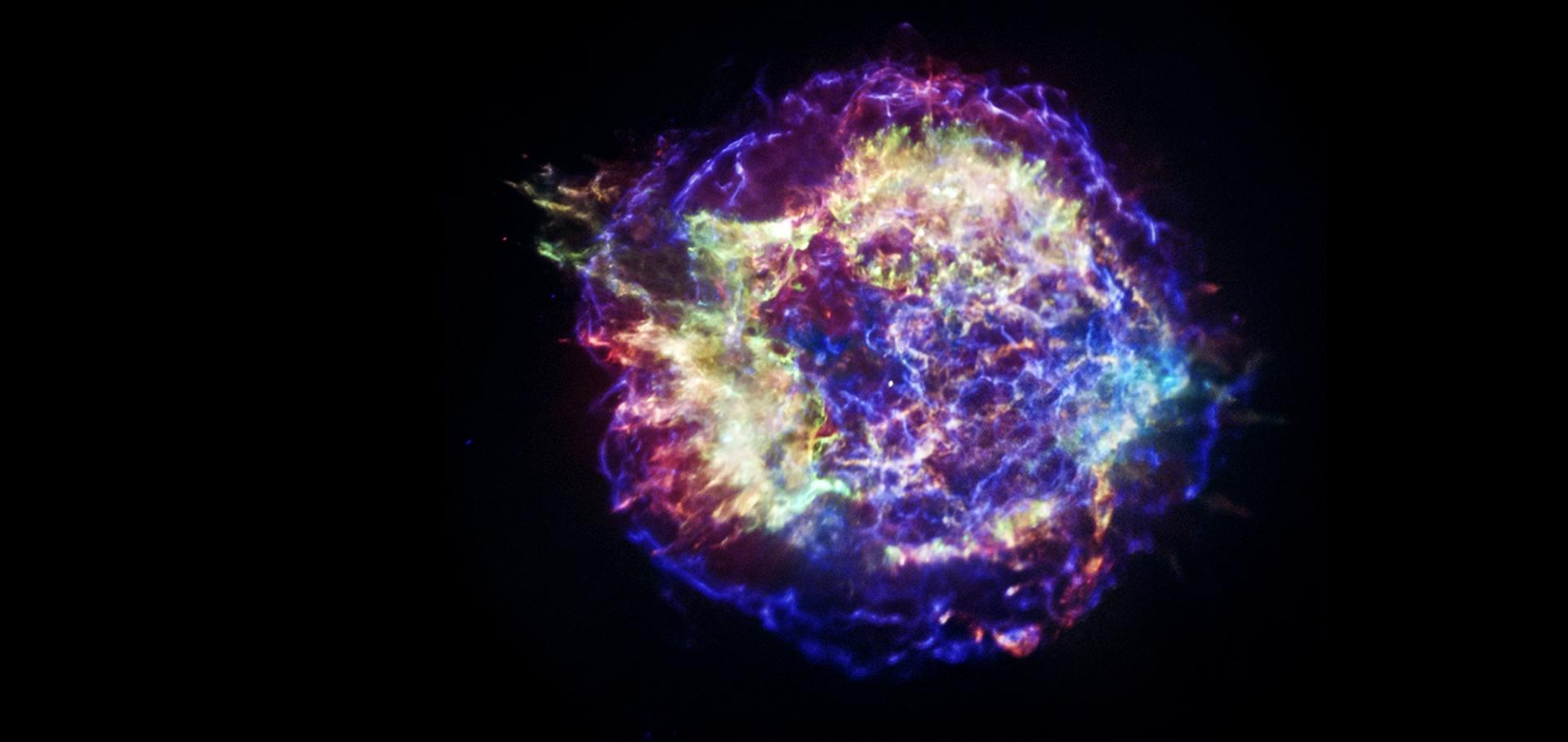The Thousand-Pulsar-Array programme on MeerKAT – XV. A comparison of the radio emission properties of slow and millisecond pulsars
Monthly Notices of the Royal Astronomical Society Oxford University Press (OUP) 532:3 (2024) 3558-3566
NICER timing of the X-ray thermal isolated neutron star RX J0806.4--4123
(2024)
Shockingly Bright Warm Carbon Monoxide Molecular Features in the Supernova Remnant Cassiopeia A Revealed by JWST
The Astrophysical Journal Letters American Astronomical Society 969:1 (2024) L9
Abstract:
We present JWST NIRCam (F356W and F444W filters) and MIRI (F770W) images and NIRSpec Integral Field Unit (IFU) spectroscopy of the young Galactic supernova remnant Cassiopeia A (Cas A) to probe the physical conditions for molecular CO formation and destruction in supernova ejecta. We obtained the data as part of a JWST survey of Cas A. The NIRCam and MIRI images map the spatial distributions of synchrotron radiation, Ar-rich ejecta, and CO on both large and small scales, revealing remarkably complex structures. The CO emission is stronger at the outer layers than the Ar ejecta, which indicates the re-formation of CO molecules behind the reverse shock. NIRSpec-IFU spectra (3–5.5 μm) were obtained toward two representative knots in the NE and S fields that show very different nucleosynthesis characteristics. Both regions are dominated by the bright fundamental rovibrational band of CO in the two R and P branches, with strong [Ar vi] and relatively weaker, variable strength ejecta lines of [Si ix], [Ca iv], [Ca v], and [Mg iv]. The NIRSpec-IFU data resolve individual ejecta knots and filaments spatially and in velocity space. The fundamental CO band in the JWST spectra reveals unique shapes of CO, showing a few tens of sinusoidal patterns of rovibrational lines with pseudocontinuum underneath, which is attributed to the high-velocity widths of CO lines. Our results with LTE modeling of CO emission indicate a temperature of ∼1080 K and provide unique insight into the correlations between dust, molecules, and highly ionized ejecta in supernovae and have strong ramifications for modeling dust formation that is led by CO cooling in the early Universe.The Thousand-Pulsar-Array programme on MeerKAT – XIII. Timing, flux density, rotation measure, and dispersion measure time series of 597 pulsars
Monthly Notices of the Royal Astronomical Society Oxford University Press (OUP) 530:2 (2024) 1581-1591
A JWST Survey of the Supernova Remnant Cassiopeia A
The Astrophysical Journal Letters American Astronomical Society 965:2 (2024) l27


